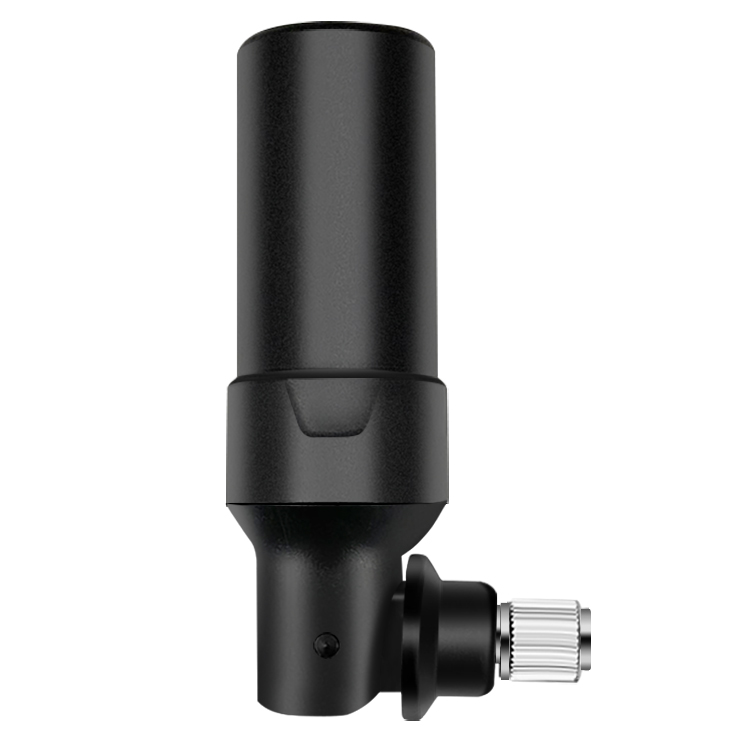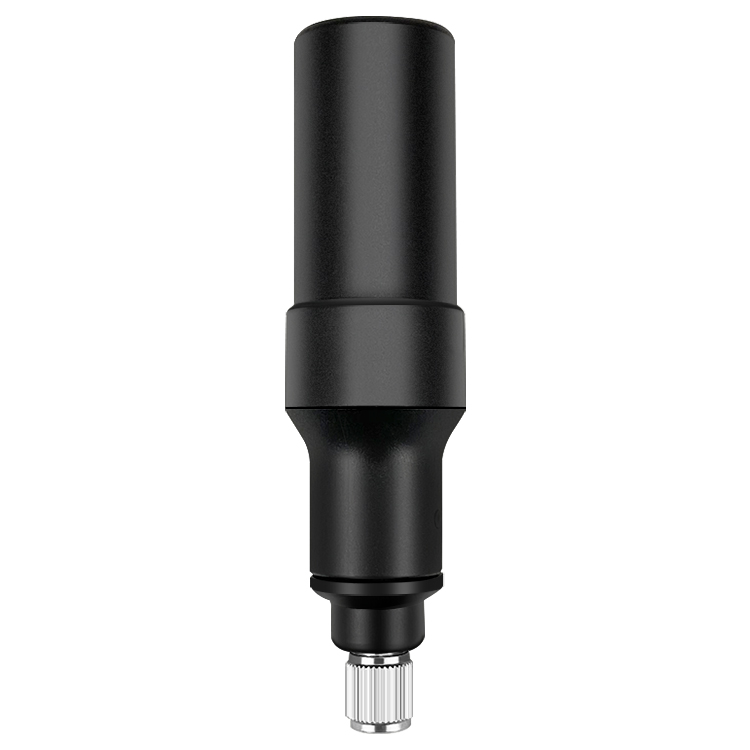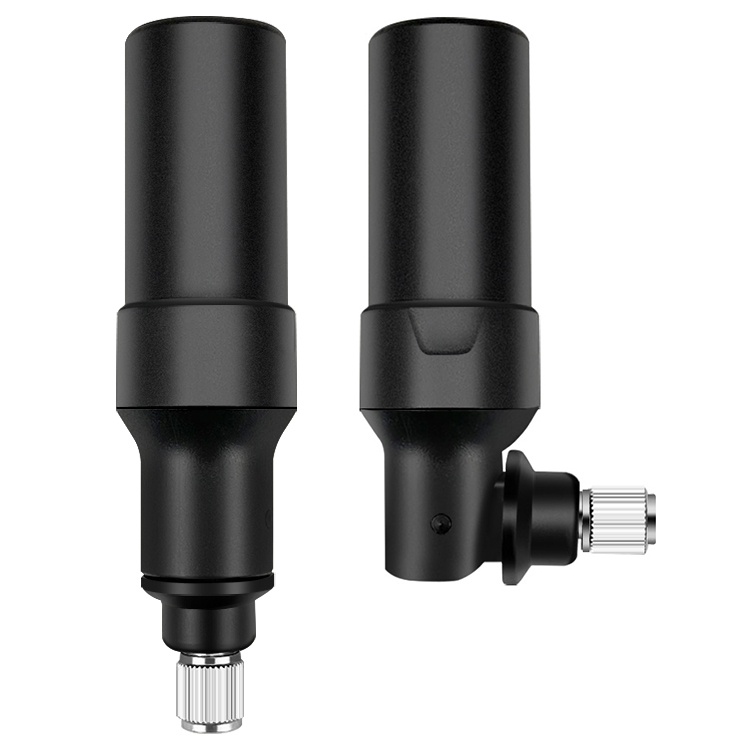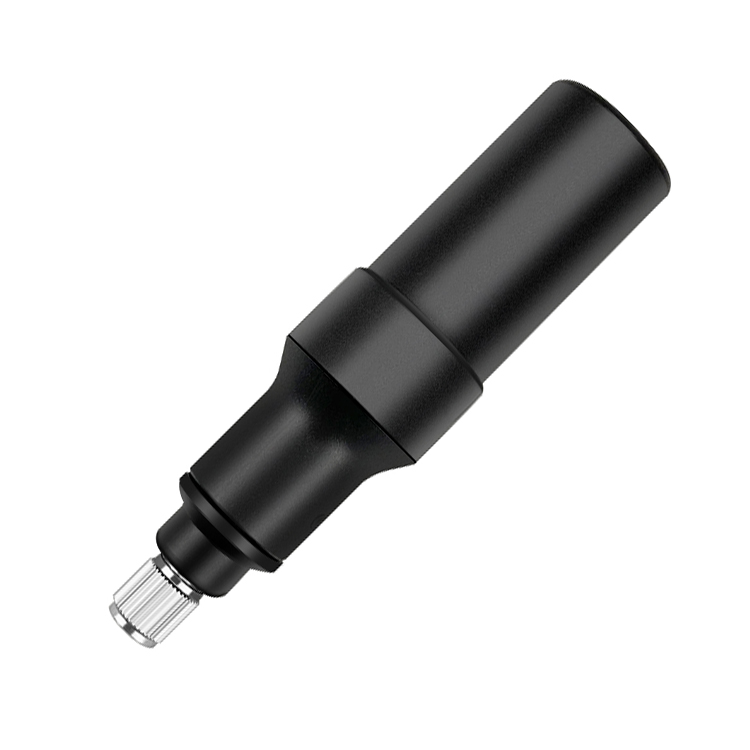Overview
The "four-arm" or "quadrifilar" design is the key to its superior performance. Unlike a simple mono-filar (single-wire) helix, which is typically linearly polarized, the QHA is inherently a circularly polarized antenna. By driving four individual helical elements with signals phased 90 degrees apart (0°, 90°, 180°, 270°), it creates the rotating electromagnetic field essential for perfect coupling with circularly polarized waves. This makes it ideally suited for satellite systems, including both GNSS (Global Navigation Satellite Systems) and satellite communication (SatCom) links, as these signals are transmitted with circular polarization to mitigate Faraday rotation and other polarization-shifting effects caused by the ionosphere.
The term "durable" in its description is not merely an adjective but a core design requirement. These antennas are engineered to operate reliably in the most demanding conditions on Earth and beyond. Their durability encompasses several facets:
Environmental Durability: They are built to withstand extreme temperatures, intense UV radiation, salt spray, sand, rain, and icing. Their radomes are constructed from materials like cyanate ester composites or high-grade fiberglass that offer minimal RF signal loss while providing robust physical protection.
Mechanical Durability: Designed for high-vibration environments, such as those found on aircraft, missiles, unmanned aerial vehicles (UAVs), and ground vehicles traversing rough terrain, their internal structures are solidly supported and potted to prevent movement or damage to the delicate phasing networks.
Electrical Durability: They are designed to handle high power levels for transmission applications and are often equipped with robust lightning arrestors and grounding systems to survive electrical storms.
The historical development of the QHA is deeply intertwined with the space race and military communications. Its ability to provide a wide, hemispherical coverage pattern—unlike the narrow pencil beam of a parabolic dish—meant that a vehicle or vessel could maintain a communication link with a satellite without the need for complex, gimbaled tracking systems. This "hemispherical" or "near-hemispherical" pattern ensures that signals can be received from any angle above the horizon, a critical feature for platforms that change orientation, like rockets, aircraft, or ships rolling on the high seas.
In essence, the durable four-arm helical antenna is the antenna of choice when failure is not an option. It is found on search and rescue helicopters, military patrol aircraft, commercial airliners for passenger Wi-Fi and safety services, on satellites themselves as telemetry and command antennas, and as reference stations for high-precision GNSS networks. It represents a class of antenna where performance and reliability are prioritized above all else, including size and cost, making it a cornerstone technology for aerospace, defense, and critical infrastructure.
Design and Construction
The construction of a durable four-arm helical antenna is a sophisticated process that blends precision electromagnetics with ruggedized mechanical engineering. It is a system comprising not just the radiating elements, but also a complex feed network, a protective radome, and often an integrated ground plane. Its design is a careful balance between achieving optimal electrical characteristics and ensuring those characteristics remain stable under extreme physical stress.
1. The Helical Radiating Elements:
The core of the antenna consists of four identical helical arms. These are not simple wires but are precisely formed conductors, which can be:
Wire Helices: Thick, often silver-plated copper wires wound around a central mandrel or dielectric support core.
Printed Helices: Copper traces photolithographically etched onto a cylindrical substrate made of Teflon (PTFE) or other low-loss dielectric materials. This method allows for极高的 precision and reproducibility.
Machined Helices: For the most demanding applications, the arms might be machined from solid metal or plated onto a ceramic core.
The key geometric parameters are:
Diameter (D): The diameter of the cylinder upon which the helices are wound.
Pitch (S): The distance between turns for a single helix.
Length (L): The overall axial length of the helical section.
Number of Turns: Typically, an QHA has between 1.5 to 4 turns per arm. The number of turns directly influences the radiation pattern and impedance.
These parameters are meticulously calculated, often using advanced electromagnetic simulation software, to determine the operating frequency, bandwidth, and axial ratio.
2. The Feed Network (Phasing Harness):
This is the electrical heart of the antenna. The four arms must be fed with signals equal in amplitude but sequential in phase (0°, 90°, 180°, 270°). This is achieved through a network of transmission lines, typically stripline or microstrip, printed on a planar board located at the base of the antenna. This network includes:
Power Dividers: To split the input signal equally into four paths.
Phase Shifters: To impart the necessary 90-degree progressive phase delay to each path. These are often achieved through specific trace lengths (a 90° delay line) but can also be implemented with lumped elements (capacitors and inductors) or active components.
Impedance Matching Circuits: To ensure a perfect 50-ohm match at the input port, maximizing power transfer.
This feed network is critically important and is often potted with a silicone or epoxy compound to protect it from moisture, vibration, and thermal cycling.
3. The Central Support Structure and Ground Plane:
The helices require a rigid structural support. This can be a hollow dielectric cylinder (e.g., from fiberglass or Ultem) or sometimes a metallic cylinder that also serves as a ground plane or a cavity backing. The ground plane, typically a circular metal plate at the base of the helices, is essential for shaping the radiation pattern. It reflects energy forward, creating the desired hemispherical coverage and providing a well-defined reference for the antenna's impedance. The size of the ground plane is a key design parameter.
4. The Radome:
The entire radiating structure is enclosed within a protective radome. This is not a simple plastic cover but an engineered component. It must be:
Electromagnetically Transparent: Made from materials with a low dielectric constant and very low loss tangent (e.g., specialized polycarbonates, fiberglass, or Gore-Tex® PTFE laminates) to minimize signal attenuation and phase distortion.
Physically Robust: Designed to withstand hail, bird strikes, high wind loads, and extreme pressure differentials (on aircraft).
Environmentally Sealed: It forms a waterproof and often pressurized seal with the base, preventing moisture ingress that could detune the antenna or damage the feed network.
5. Durability Enhancements:
Potting and Conformal Coating: Electronic components and connections are often encapsulated in protective compounds to resist vibration and corrosion.
Materials Selection: Aluminum and stainless steel are used for metal parts, with advanced coatings for corrosion resistance (e.g., alodine, powder coating). Radomes use UV-stabilized polymers.
Connectors: High-reliability, weather-sealed RF connectors (e.g., TNC or N-type) are used, often with backshell strain relief.
The entire assembly is a marvel of integration, where every material and mechanical tolerance is chosen to ensure that the antenna's electrical performance remains stable from -55°C to +85°C and while enduring years of vibration and environmental exposure.
Working Principles
The operation of the four-arm helical antenna is an elegant demonstration of how a specific geometric arrangement and phased excitation can produce a near-ideal radiation pattern for satellite communication. Its working principles revolve around two core concepts: the generation of circular polarization and the formation of a cardioid-shaped radiation pattern.
1. Generation of Circular Polarization:
Circular polarization (CP) is achieved by exciting two orthogonal linear modes that are 90 degrees out of phase. In a QHA, this is accomplished inherently through its structure and feeding mechanism.
Each of the four arms can be thought of as a combination of two orthogonal dipoles.
When the four arms are driven with a progressive 90-degree phase shift (0°, 90°, 180°, 270°), it creates a rotating electric field vector within the antenna structure.
This rotation occurs at the frequency of the transmitted/received signal. For a right-hand circularly polarized (RHCP) antenna, the phase progression is in one direction (e.g., clockwise when viewed from above); for left-hand circular polarization (LHCP), the phase is reversed.
The helical shape of the arms is crucial. Each turn of the helix is approximately one wavelength in circumference, which means the current distribution along the arm has a phase velocity that matches the physical rotation, reinforcing the circular polarization effect. This makes the QHA inherently a broadband circularly polarized antenna, unlike patch antennas which achieve CP over a narrower bandwidth.
2. Formation of the Hemispherical Radiation Pattern:
The radiation pattern of a standard helix antenna changes dramatically with its geometry. A helix with a large circumference (compared to wavelength) and high pitch angle operates in "axial mode," producing a directional beam along its axis, like a screw.
The QHA, typically with a smaller circumference and fewer turns, operates in a "normal mode" or a specialized quadrifilar mode. The combination of the four phased arms and the ground plane results in a unique radiation pattern:
Cardioid Pattern: The pattern in the elevation plane resembles a cardioid (a heart shape). It has a very deep null directly behind the ground plane (i.e., along the negative z-axis) and maximum gain at a specific angle above the horizon (e.g., 20-40 degrees).
Wide Azimuth Coverage: In the azimuth plane (around the axis), the pattern is omnidirectional. This means the antenna has consistent performance for all compass directions.
Hemispherical Coverage: The combination of the cardioid elevation pattern and omnidirectional azimuth pattern results in a solid dome of coverage over the entire upper hemisphere. This is its most valued characteristic. A satellite located anywhere in the sky above the horizon will be within the antenna's main beam, eliminating the need for mechanical steering.
3. Reception of GNSS/Satellite Signals:
The process for receiving a signal is as follows:
A RHCP wave from a satellite arrives at the antenna.
The wave induces currents in the four helical elements. Due to the physical rotation and the phasing of the elements, these currents naturally combine with the correct phase relationship.
The feed network acts in reverse during reception. The signals from the four arms are combined through the phasing network. The progressive phase delays in the network cancel out the phase shifts acquired from the incoming wave, ensuring all signals add constructively at the central feed point.
This combined signal is then delivered to the receiver with high efficiency. The antenna's excellent axial ratio (often < 3 dB across the entire hemisphere) ensures minimal loss when coupling with the pure circular polarization from the satellite.
In summary, the QHA works by transforming a linear feed signal into a rotating field via its physical structure and phased excitation, creating a wave that propagates outward in a wide, hemispherical pattern. In reverse, it is perfectly matched to receive incoming circularly polarized waves from any direction in the upper hemisphere, making it an exceptional "viewer of the sky."
Advantages and Challenges
-
The durable four-arm helical antenna offers a unique set of advantages that make it indispensable for its target applications. However, these advantages come with a set of inherent challenges and trade-offs that limit its use in more general contexts.
Advantages:
Exceptional Circular Polarization Purity: The QHA achieves a very low axial ratio across its entire operating bandwidth and over a wide angular range. This results in minimal polarization mismatch loss when communicating with satellites, directly translating to higher signal strength and link reliability.
Near-Perfect Hemispherical Coverage: This is its flagship advantage. The cardioid radiation pattern provides consistent gain for all azimuth angles and for elevations from the horizon up to zenith (directly overhead). This makes it ideal for platforms that move and rotate, as it guarantees a continuous link without nulls or drop-outs.
Inherently Broad Bandwidth: Compared to microstrip patch antennas, the QHA offers a relatively wide impedance and axial ratio bandwidth, often exceeding 10% of the center frequency. This allows a single antenna to cover multiple GNSS bands (e.g., L1 and L2) or a wide SatCom frequency range.
High Durability and Environmental Resilience: As designed, it can withstand extreme mechanical shock, vibration, temperature, and moisture. Its construction is inherently robust, with no fragile protruding elements, making it suitable for the most demanding aerospace and marine environments.
Superior Multipath Rejection: The deep null in the radiation pattern behind the ground plane is highly effective at rejecting signals reflected from the ground or the platform it is mounted on (multipath). This is especially critical for GNSS applications, as multipath is a primary source of positioning error.
Challenges and Limitations:
Large Size and Profile: This is the most significant disadvantage. The antenna's physical dimensions are dictated by the wavelength. At 1.5 GHz (GNSS L1), a typical QHA can be 10-15 cm in diameter and 5-10 cm tall. This is orders of magnitude larger than a ceramic patch antenna, making it completely unsuitable for smartphones, wearables, and most consumer electronics.
High Cost and Manufacturing Complexity: The precision required in winding or printing the helices, assembling the phasing network, and building the ruggedized assembly results in a high unit cost. These are not mass-produced items but are often custom-built or made in small batches for specialized clients.
Weight: The use of metal ground planes, solid radomes, and structural supports makes the QHA significantly heavier than plastic-encased patch antennas. This weight must be considered in aircraft and UAV applications.
Limited Gain at Low Elevation Angles: While the hemispherical pattern is excellent for coverage, the gain is not uniform. The maximum gain is typically at a medium elevation angle (e.g., 25°). The gain at the horizon (0°) and at zenith (90°) is lower. For long-distance satellite links where the satellite is at a low elevation, a different antenna with higher forward gain (like a parabolic dish) might be preferred, though it would lack the coverage.
Design Complexity: The design process is non-trivial. The interaction between the helix dimensions, the phasing network, and the ground plane size is complex and requires extensive simulation and prototyping to optimize, adding to development time and cost.
In conclusion, the QHA is a specialist's tool. Its advantages are overwhelming for applications that require unwavering reliability and wide coverage from a single, fixed antenna on a moving platform. Its challenges, particularly its size and cost, simply disqualify it from the consumer market, cementing its role in the aerospace, defense, and professional sectors.
Applications and Future Trends
-
The unique combination of robustness and hemispherical coverage ensures the durable four-arm helical antenna remains a critical component in systems where performance cannot be compromised. Its applications are diverse yet focused on high-value, mission-critical fields.
Applications:
Aerospace and Aviation:
Commercial Airliners: Used for satellite communication (SATCOM) for cockpit data links (ACARS) and passenger Wi-Fi (e.g., Inmarsat, Iridium, ViaSat systems). Also used for satellite-based augmentation systems (SBAS) like WAAS and EGNOS for precision approach navigation.
Military Aircraft: Found on patrol aircraft, helicopters, and fighters for secure SatCom, data links, and beyond-line-of-sight (BLOS) communication.
Unmanned Aerial Vehicles (UAVs): Essential for long-range command and control (C2) links and for transmitting high-resolution sensor data in real-time via satellite.
Missiles and Space Launch Vehicles: Used for telemetry, tracking, and command (TT&C) links, providing a stable connection throughout flight without requiring antenna steering.
Maritime:
Commercial Shipping: Used for VSAT systems providing broadband internet and voice communication for crew and operational data.
Naval Vessels: For strategic and tactical SatCom links.
Yachts and Research Vessels: For reliable communication and internet access in remote oceans.
Ground-Based and Fixed Infrastructure:
Satellite Teleports: Used as uplink/downlink antennas for fixed satellite service (FSS).
GNSS Reference Stations: Its superior multipath rejection and stable phase center make it ideal for permanent, high-precision GNSS base stations used in surveying, scientific monitoring (tectonic plate movement), and network RTK corrections.
Emergency Beacons: EPIRBs (Maritime) and ELTs (Aviation) often use miniaturized QHAs to ensure they can transmit a distress signal to search and rescue satellites (COSPAS-SARSAT) from any orientation, even if the vessel is capsized or the aircraft is wrecked.
Satellite Constellations:
Used on the satellites themselves as telecommand and telemetry antennas for communication with ground stations.
Future Trends:
Multi-Band/Multi-Constellation Operation: The demand for antennas that can support all GNSS frequencies (L1, L2, L5) and multiple SatCom bands (L-band, S-band) simultaneously is growing. Future QHAs will employ more complex helix designs (e.g., dual-band helices) and sophisticated wideband feed networks to cover these disparate frequencies in a single unit.
Further Miniaturization: While inherently larger than patches, there is ongoing research to reduce the QHA's profile. Techniques include using high-dielectric loading materials (though this reduces bandwidth), more efficient winding geometries, and fractal-inspired designs to effectively "cram" more electrical length into a smaller physical volume.
Conformal and Low-Profile Designs: For integration on aircraft fuselages and vehicles where a protruding antenna is undesirable, there is a push to develop conformal QHAs that can be flush-mounted. This presents significant engineering challenges in maintaining performance without a well-defined ground plane.
Integration with Active Electronics: The trend of creating "active antennas" is reaching the QHA. Future designs may integrate low-noise amplifiers (LNAs) and even entire receiver front-ends within the antenna base, providing a more robust and simplified system solution.
Advanced Materials: The use of new composite materials for radomes and supports will continue, aiming for lighter weight, greater strength, and even better RF transparency. Additive manufacturing (3D printing) may also play a role in creating complex support structures and custom radomes.
Resilience to Jamming and Spoofing: For military and safety-critical applications, future QHAs may incorporate integrated null-steering capabilities. Using controlled variations in the feed network, the antenna could actively form nulls in the direction of jamming signals while preserving gain towards the desired satellites.
The durable four-arm helical antenna will continue to be a vital technology. Its future is not one of replacement but of evolution, adapting to support new frequency bands, more compact form factors, and smarter capabilities, all while maintaining the rugged reliability that defines its core identity.
Conclusion
The durable four-arm helical antenna occupies a unique and respected niche in the world of RF engineering. It is a design that elegantly solves a specific set of critical problems: providing reliable, circularly polarized, hemispherical coverage in the most physically demanding environments. In an industry often obsessed with making components smaller, cheaper, and more integrated, the QHA stands as a reminder that for a certain class of applications, pure performance and absolute reliability are the only metrics that truly matter.
Its value proposition is clear and compelling. For a missile guidance system, a search and rescue helicopter, a transoceanic airliner, or a precision scientific reference station, the ability to maintain an unbroken and high-integrity link with satellites, regardless of platform orientation or environmental conditions, is non-negotiable. The antenna's slightly larger size and higher cost are not drawbacks but rather investments in this guaranteed performance—a necessary premium for ensuring mission success and safety.
The technological principles behind the QHA—using multiple phased radiators to shape a beam and create pure circular polarization—are as relevant today as they were decades ago. While materials and simulation tools have advanced, the fundamental physics remains sound. This is a testament to the elegance and effectiveness of its original design.
Looking forward, the QHA is not a legacy technology facing obsolescence. Instead, it is a mature platform poised for continuous refinement. The drivers of future innovation—multi-band operation, modest size reduction, conformal installation, and enhanced electronic protection—will ensure its continued relevance in the next generation of aerospace, defense, and critical communication systems. It will remain the antenna of choice for situations where the link must hold, no matter what. In the intricate ecosystem of wireless communication, the durable four-arm helical antenna is, and will continue to be, a unwavering sentinel, steadfastly watching the sky.




































































 Language
Language
 En
En Cn
Cn Korean
Korean

 Home >
Home > 








 18665803017 (Macro)
18665803017 (Macro)













